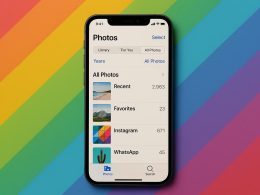To protect users’ privacy, developers must put their apps through regression testing to ensure that previously developed and tested software still performs after changes have been made.
Most people’s phone screens are a melange of different-colored app icons. Many of these apps either ask for permission to make changes to your phone’s privacy settings or, based on the terms of service, just go ahead and do it.
The objective of most apps is to provide you with a service in exchange for your data. You get a convenient way to order food with a few clicks and swipes, UberEats gets to learn about what you like to order and when so it can better market and advertise to you.
The problem is, many of the privacy setting requests and changes made by some of these apps are ones you would probably rather deny. Below are some tips to help you optimize your app settings for privacy.
OS Updates and Privacy
Not only should you immediately go to the app settings on your phone as soon as you download a new app, but you should repeat the process anytime you update your phone’s operating system.
This is because major changes to any application or operating system can end up leaving them vulnerable to hacking and misuse. Developers should always make sure to perform rigorous regression testing on their software anytime wholesale changes are made to ensure there are no glaring vulnerabilities.
Set Screen Pinning
This one is for Android users specifically. Screen pinning allows you to lock any single app or phone process, requiring authentication to bypass.
This is a great feature to have in place for when you have to hand your phone over to a friend, colleague, parent, or spouse and you want to make sure that they do not accidentally start using something that they shouldn’t be (for personal or professional reasons).
Limit Facebook Access
A lot of people get into the bad habit of permitting any access requests an app makes for the sake of speed and convenience. But blowing through the permission requests and blindly granting access, especially to Facebook, is a very bad idea.
This is because many of the apps that we hastily download for this or that specific purpose (sometimes for a one-off task) are often abandoned by their developers. These become a major security risk because malicious actors can gain access to the app’s database of users, and potentially even certain features of your Facebook account. Facebook said in the wake of the 50 million users whose data were compromised in 2018 that hackers may have also gotten access to other app data linked to Facebook via permissions.
Pay Close Attention to MMS/SMS Permissions
The next time you install an Android app on your phone and it is asking you to grant it permission to send and receive SMS/MMS, ask yourself whether that makes sense for a given app. This is an important question because a lot of scams make their money through the use of expensive MMS and SMS messages.
Often, the user has given the app permission to do this during a hasty installation. If you are being forced to give an app the ability to send and receive MMS/SMS, and are having a hard time justifying the permission, best practices would dictate you get rid of the app ASAP.
Conclusion
Your phone is the gateway into the most intimate areas of your personal and professional life and it is surprising how many people continue to be so flippant about their privacy.
See: No more targeted ads on iPhone after new iOS 14 update – Facebook
As our phones become more sophisticated in their functionality and integrate themselves even further into our daily lives–a process that is sped up by the growth of IoT and 5G wireless tech–knowing how to make sure our apps don’t become cybersecurity threats is a fundamental part of a life lived online.
Keep the above app setting considerations in mind and ensure your personal information stays personal.
Did you enjoy reading this article? Do like our page on Facebook and follow us on Twitter.









